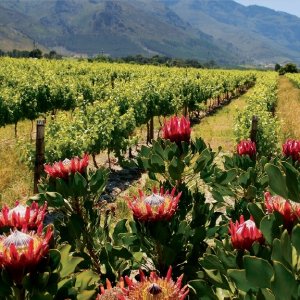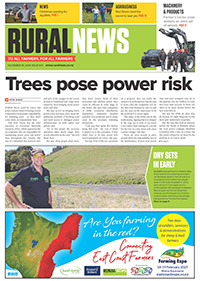So how does Sustainable Winegrowing New Zealand stack up against the schemes run by its competitors? This was the question investigated in a recent survey commissioned by Sustainable Winegrowing New Zealand and carried out by John Manhire from the Agribusiness Group. It undertook a comparative review of international quality and sustainability assurance programmes to reveal their varying scopes, while identifying trends and highlighting any gaps within the Sustainable Winegrowing New Zealand scheme.
"The Sustainable Winegrowing New Zealand vineyard scorecard was relatively comprehensive in comparison with many other programmes," commented Sustainable Winegrowing New Zealand's national coordinator, Sally van der Zijpp on its findings. "The Sustainable Winegrowing New Zealand sections on frost protection, water management and contractors were generally more extensive than other programmes, while the pest and disease, ground cover management sections were similar to other schemes."
However she added that the study had identified some areas where improvements could be made, which have been worked into the programme this year. These include the introduction of more questions on energy use - as the scheme moves to embrace carbon foot printing - and biodiversity and by-product management – including the creation of value added products.
Sustainable Wine South Africa
South Africa is a fellow New World winegrowing nation that has had environmentally focused schemes in place for over a decade. It established its Integrated Production of Wine Scheme in 1998, as well as its more recent Biodiversity and Wine Initiative. From the 2010 vintage, the creation of Sustainable Winegrowing South Africa allied these two schemes, which are run under the jurisdiction of the country's Wine Standards Board.
A sustainability seal was also introduced as of 2010 for wines bottled in South Africa that conform to Integrated Production of Wine Scheme standards in the farm, the winery and the bottling plant. As well as certifying that the vintage, variety/varieties and origin as stated on the label are correct and that the wine has been grown and produced sustainably, it acts as a guarantee of traceability from the vine to the bottle.
Currently 84% of all wines from the country's 2010 vintage and onwards qualify for a wine of origin seal and the new sustainability seal. While the system is currently voluntary, there are plans for it to become compulsory in the future.
Similar to Sustainable Winegrowing New Zealand, South Africa's sustainability scheme is managed using a combination of self-evaluation questionnaires and independent audits. It consists of a set of separate guidelines applied to good practice in the vineyards (farm) and winery, as well as packaging activities (bottling). At present, compliance can be achieved for the different activities (farm, winery and bottling) separately or in combination.
Key elements of the programme include specifying minimum withholding periods for agrochemicals; limiting the chemicals used to only those that are registered; outlawing non-permitted residues in grapes; and all aspects relating to the health and safety of workers and the handling, storage and disposal of agrochemicals.
It also encompasses the introduction of natural predators in vineyards, with New Zealand's Agribusiness study indicating that South Africa was ahead of New Zealand in the areas of conservation and biodiversity.
South Africa also emerged ahead of New Zealand in its inclusion of the area of vine training, crop and canopy management. Unlike Sustainable Winegrowing New Zealand, it also covered the traffic, water use and road issues associated with tourism; winery carbon emissions and grape quality relating to the likes of rot and SO2 levels.
For a country where water is a scarce resource, South Africa surprising lagged behind New Zealand in the area of vineyard water management. However, water conservation was flagged as a priority for inclusion in the future.
Chile's Sustainability Code
In contrast to South Africa and New Zealand, Chile has been slower to develop a sustainability programme, launching its Sustainability Code only last year. However, claiming that it is "the most ambitious and comprehensive code among wine producing nations", its targets are to increase the current 13% of its vineyard area incorporated to the system to 70% by the end of 2016 and hit 90% by 2019. Ambitious words about the country's sustainable aims were delivered by René Araneda, President of Wines of Chile, on the certification of its first 14 wineries for their vineyard practices this January.
"We are committed to become the number one producer of premium, sustainable and diverse wines from the New World by 2020," he stated. "To achieve this goal it is imperative to create innovation that boosts our competitiveness. The development and implementation of Wines of Chile's state-of-the-art Sustainability Code is a key pillar to achieve this objective".
While the specifics of the scheme have yet to be released publicly by Wines of Chile, and was not included in the Agribusiness report, it would appear to largely function along the same lines as the Sustainable Winegrowing New Zealand and SWSA programmes.
At its core is a scorecard style system with a checklist of control points to be evaluated and a manual and recommendations for each control point, supported by independent inspections.
Chile's sustainability code is divided into three areas. Its "Green Chapter" covers the vineyards and is focused on the management of natural resources; pests and disease control; agrochemical use and industrial safety. In the winery, its "Red Chapter" is concerned with energy efficiency; water management; waste; recycling and the prevention of contamination. Finally its "Orange Chapter" relates to Community, embracing business ethics; the environment; working conditions; relationships with the community; marketing and consumers.
Currently, the certification only covers the green stage and is valid for just one year.
The coming year will see the red and orange chapters added to the certification, with this new certification effective for two years.
As pressure for winegrowing nations to prove their green credentials grows in key wine markets - such as Sweden which as of this year requires the wines it purchases to demonstrate transparency in their environmental and social traceability – sustainability is becoming a priority for many, something that the likes of Chile is not shy to promote.
Here in New Zealand, as well as endeavouring to make Sustainable Winegrowing New Zealand more comprehensive in the areas relevant to the country's conditions, New Zealand Winegrowers has also funded research into how to communicate its environmental achievements to the world.
"We recognise that our growers and wineries had been working hard on the basics of sustainability for some time," acknowledged Philip Manson, Science & Innovations Manager at New Zealand Winegrowers, "but that equity hasn't been banked into the value of a market opportunity."
Following the report by Jeff Clark (ex-Cleminger BBDO) - which set out to discover how best to spread the word about New Zealand's sustainable story in the country's major markets - a communication strategy is now in place.
Focused on explaining the concept of sustainability as it relates to New Zealand's wines in simple terms, an agency has now been appointed, with the campaign rolled out in the next three to six months.
Both the Agribusiness report and this new communication initiative appear timely in an era where sustainability is increasingly expected from the world's wine industry and can no longer be regarded as a point of difference.
In order to maintain its environmental lead over the likes of South Africa and Chile, New Zealand needs to be proactive in keeping its practice at the forefront of sustainability, and making sure that the world knows it.
This email address is being protected from spambots. You need JavaScript enabled to view it. ■










